 by "ttyymmnn" (ttyymmnn)
by "ttyymmnn" (ttyymmnn)
Published 12/22/2017 at 12:35
 by "ttyymmnn" (ttyymmnn)
by "ttyymmnn" (ttyymmnn)
Published 12/22/2017 at 12:35
Tags: planelopnik history
; Planelopnik
STARS: 12
!!! UNKNOWN CONTENT TYPE !!!
Welcome to
This Date in Aviation History
, getting of you caught up on milestones, important historical events and people in aviation from December 20 through December 22.
!!! UNKNOWN CONTENT TYPE !!!

December 20, 1957 – The first flight of the Boeing 707. The de Havilland Aircraft Company ushered in the future of commercial aviation when their DH 106 Comet airliner took to the skies on July 27, 1949 as the world’s first jet-powered passenger plane. Unfortunately for de Havilland, however, structural deficiencies in the Comet led to three fatal crashes, and the flying public cooled on the idea of jet transport as the Comet was pulled from service to address the problems. Despite the difficulties faced by de Havilland, Boeing , and particularly the company president, William Allen , were undeterred. They believed so firmly in the future of jet aviation that they were willing to stake their company on developing a new jet airliner, spending $16 million of their own money, nearly all the profit they earned from production of WWII aircraft.

With their earlier work on the B-47 Stratojet , Boeing had learned a great deal about the aerodynamic benefits of the swept wing, and, between 1952-1954, they had been working on a swept wing jet that they called the Model 367-80 (known as the Dash 80). The Dash 80 shared the same 35-degree wing sweep of the Stratojet and the B-52 Superfortess , and was powered by four Pratt & Whitney JT3C turbojet engines, a civilian version of the engine that powered the B-52. The impetus for development of the Dash 80, which took its maiden flight on July 15, 1954, was to provide the US Air Force with a jet-powered aerial tanker, but Boeing also hoped to develop the Dash 80 into a civilian airliner, though there was no guarantee of a market for a civilian jetliner. Their last commercial venture, the Boeing 377 Stratocruiser , had lost money until the US Air Force adopted it as the C-97 Stratofreighter . And cautious airline executives were in no hurry to turn their backs on the tried and true piston engines that had carried America though the war. So Boeing took the Dash 80 on a sales tour to tout its capabilities, and in one famous demonstration, test pilot Tex Johnston performed a barrel roll with the large airliner in a show of the airliner’s capabilities. Airline executives were duly impressed, and work progressed on the 707.

While the 707 airliner and KC-135 Stratotanker looked very similar to their Dash 80 predecessor, they were actually distinctly different aircraft. Airline executives wanted the 707 to be wider to accommodate more passengers, so Boeing added four inches to the diameter of the fuselage, giving it the largest cabin of any airliner flying at the time. The 707 also had more than 100 windows, which allowed the airlines to arrange the seating in any way they wished and offered flexibility in passenger load. The original 707-120 seated a maximum of 189 passengers, but a typical arrangement allowed for 110 passengers.
Pan Am became the launch customer for the 707 when they placed an order for 25 airliners in 1955, and inaugurated their 707 service at National Airport on October 17, 1958 in a ceremony attended by President Dwight Eisenhower . Pan Am made their first flight with paying customers on October 26 from New York’s Idlewild Airport (currently John F. Kennedy International) to Paris, with a stop for fuel in Gander, Newfoundland. Following that first flight, the 707 went on to become the most popular airliner of the 1950s and 1960s, and became an icon of the early Jet Age . Its success also helped bring about major advancements in airport design and airport infrastructure. Between 1957 and 1994, Boeing delivered 856 707s in a handful of variants to fit the specific needs of their customers. Today, the US Air Force still flies their KC-135 tankers, but there are no 707s remaining on commercial routes. The final operational 707 belonged to Iran’s Saha Airlines , which closed the book on the 707 with a final flight in April 2013. (Photo by clipperarctic via Wikimedia Commons; Boeing photo; Photo by Nikiforov Konstantin via Wikimedia Commons )
!!! UNKNOWN CONTENT TYPE !!!
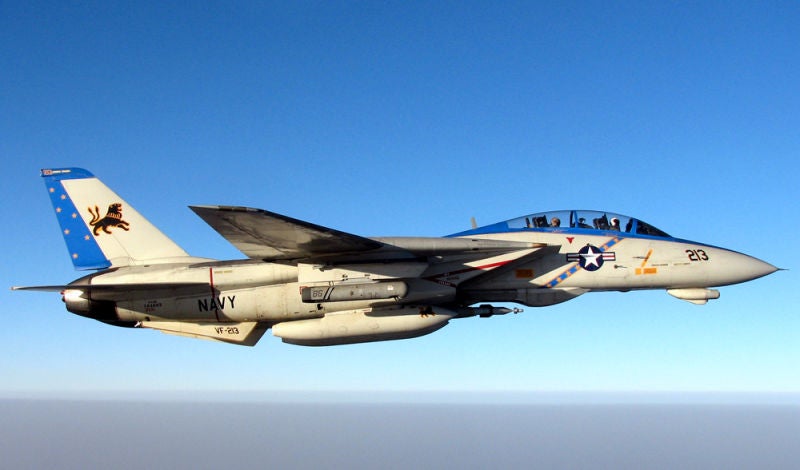
December 21, 1970 – The first flight of the Grumman F-14 Tomcat. By the end of WWII, the aircraft carrier had supplanted the battleship as the primary capital ship of the naval battle group. It’s dive bombers and torpedo bombers allowed the carrier to attack both sea and land targets, while fighters provided protection for both the attack aircraft and for the battle group. Protecting the carrier became critical.
By 1960, the US Navy began the search for a Fleet Air Defense (FAD) aircraft to intercept attacking enemy aircraft and missiles, and, in 1961, US Secretary of Defense Robert McNamara directed the US Navy and Air Force to develop a single airplane to serve both branches as part of the Tactical Fighter Experimental (TFX) program. While the aircraft that eventually came out of that program, the General Dynamics F-111 Aardvark , proved to be a capable aircraft for the Air Force, the naval variant, the F-111B, did not fit the specialized requirements of the Navy, so the Navy pulled out of the program and forged ahead on their own and turned to Grumman, who already had a rich history of producing robust carrier aircraft. In 1966, the Navy awarded Grumman with a contract to develop their Model 303 design to fill the role that was intended for the F-111. By 1968, the requirements were set for a tandem, two-seat, twin-engined air-to-air fighter with a maximum speed of Mach 2.2. Like the F-111, the new fighter was also fitted with variable-sweep wings that could be extended for low-speed flight or swept back for high speed flight.
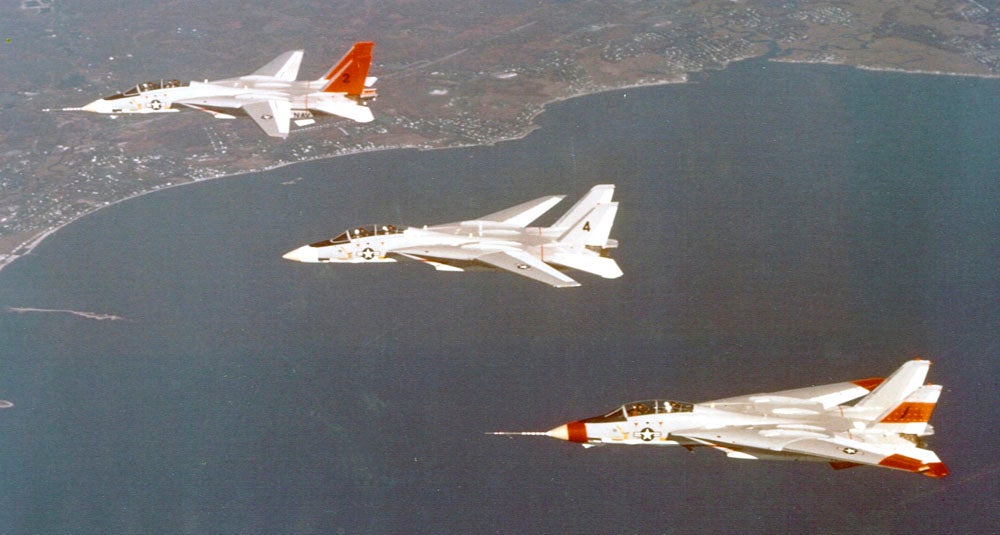
During the Vietnam War, the Navy discovered that the emphasis on missile weaponry over guns put their fighters at a disadvantage over Russian-built fighters. Based on that experience, the new fighter was armed with a built-in M61 Vulcan cannon for dogfighting as well as close air support for troops on the ground. But while the Tomcat was armed for dogfighting, its primary role was the defense of the fleet. The F-14 was designed around the Hughes AN/APG-71 radar and the AIM-54 Phoenix missile, a system that was able to track and destroy multiple targets at long range. In addition to its Phoenix missiles, the Tomcat was also armed with Sidewinder or Sparrow air-to-air missiles for close and medium range combat. The Tomcat’s wings could sweep from 68-degrees to 20-degrees based on the needs of the flight profile, and the sweep was directed by an internal computer to relieve the workload on the pilot. As the wings retracted, secondary vanes located at the front of the wingbox extended to regulate the aircraft’s center of pressure and help control pitch.
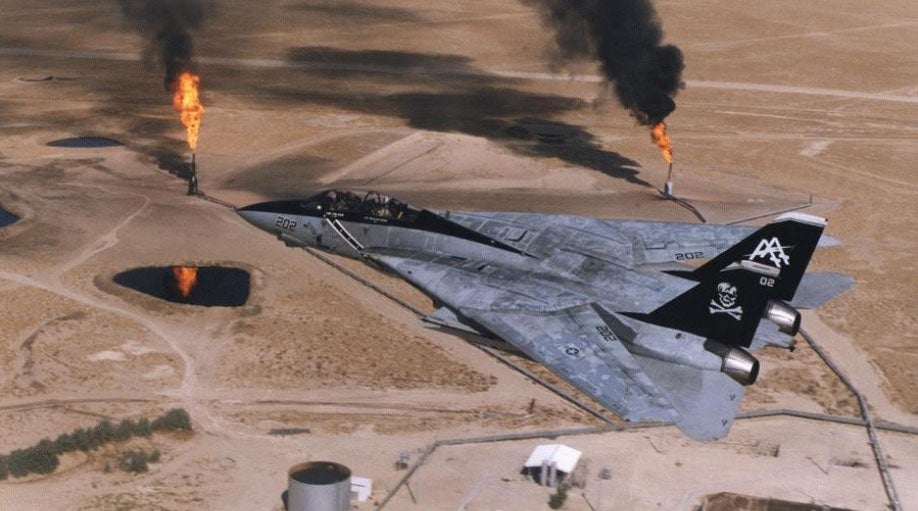
The Tomcat began to replace the McDonnell Douglas F-4 Phantom II in 1974, and Tomcats were active during the American withdrawal from Saigon at the end of the Vietnam War. The first aerial victories registered by an F-14 occurred in 1981, when Tomcats of VF-41 “Black Aces” downed two Libyan Sukhoi Su-22 fighters over the Gulf of Sidra. When the Grumman A-6 Intruder was withdrawn from Navy service in the 1990s, the Tomcat demonstrated its versatility when the ground attack mission was added to its arsenal, and F-14s carried out tactical bombing missions during the Gulf War. The final F-14 combat mission took place in February 2oo5 when Tomcats flying from the USS Theodore Roosevelt (CVN-71) dropped bombs over Iraq. The Navy finally retired the Tomcat in 2006 and replaced it with the Boeing F/A-18E/F Super Hornet , which was seen as a less expensive alternative to modernizing the aging F-14. A small number of F-14As still serve the Islamic Republic of Iran Air Force, who received Tomcats during the reign of the Shah. However, to prevent spare parts being sent to Iran after the fall of the Shah, all remaining American Tomcats were scrapped rather than put into mothballs, though a number are still on display around the country. (US Navy photos)
!!! UNKNOWN CONTENT TYPE !!!
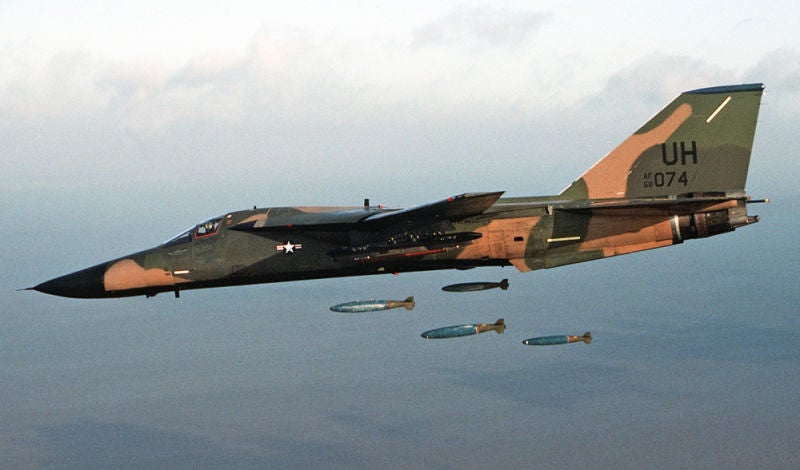
December 21, 1964 – The first flight of the General Dynamics F-111 Aardvark. In the years following WWII, the US Air Force followed the doctrine of high-altitude bombing they had carried out against Germany and Japan during the war. But in May of 1960, the Russians used a surface-to-air missile (SAM) to shoot down a high-flying Lockheed U-2 spy plane over the Soviet Union, and it suddenly became clear that altitude alone was no protection against interception. A change of tactics was in order. The new doctrine called for high-speed, low-level attacks, since low-flying aircraft were harder to detect on radar, and SAMs were less effective because they had less time to lock on a target.
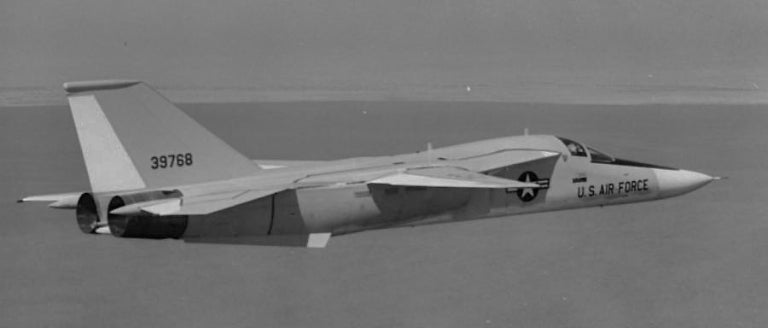
Both the Air Force and US Navy began looking for an aircraft that could fulfill this new role, but Defense Secretary Robert McNamara believed that one aircraft could serve both branches, even though the two had very different requirements. The Tactical Fighter Experimental (TFX) program was initiated by McNamara in 1961 to find an aircraft for both services. The Air Force received proposals from Boeing, General Dynamics, Lockheed, McDonnell, North American and Republic, but General Dynamics, with its swing-wing F-111, was selected. McNamara dictated that General Dynamics first develop the A model for the Air Force, and follow that with a B model modified for use by the Navy. With no experience building carrier aircraft, General Dynamics teamed with Grumman to develop the F-111B, but significant delays, and the Navy’s decision to change from a bomber to a fleet defense fighter with dogfighting capabilities, led the Navy to pull out of the F-111 program and pursue a different aircraft, eventually settling on the swing-wing Grumman F-14 Tomcat .
The Aardvark was a very advanced aircraft for its time, and was the world’s first production aircraft to employ variable-sweep wings. It was powered by two afterburning Pratt & Whitney TF30-P-1 turbofan engines that gave it a top speed of Mach 2.5, and automated terrain-following radar reduced the pilot workload during low level missions. Though the Air Force had asked for tandem seating in the cockpit, the two-man crew in the F-111 sat side by side, and were provided with an ejection capsule rather than individual ejection seats.
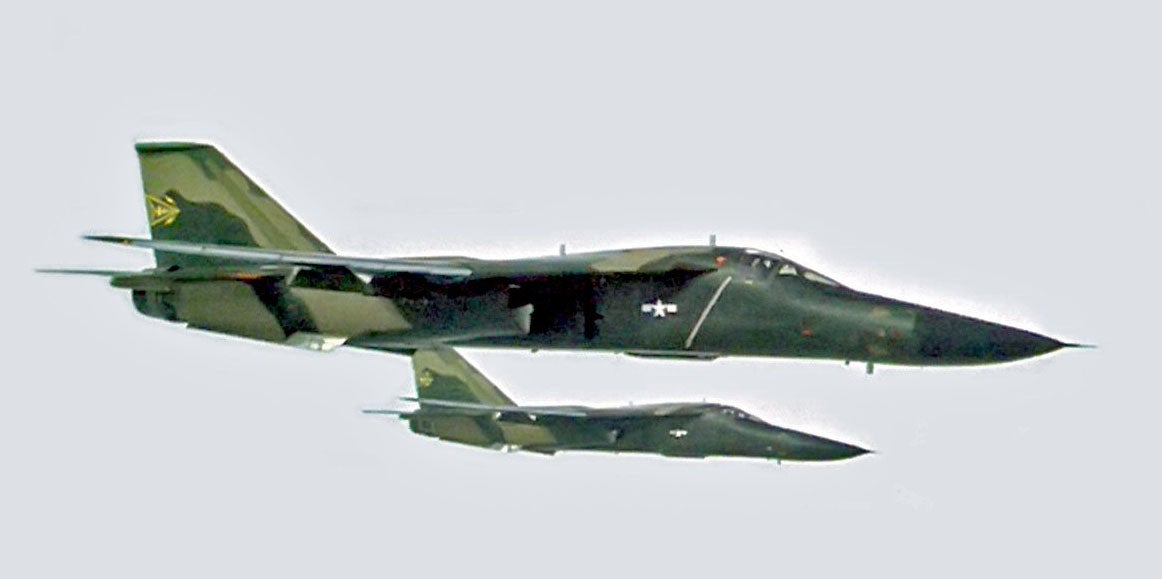
The F-111 was designed with a nuclear mission in mind and was capable of carrying a single nuclear missile or nuclear bombs, but the Aardvark found a niche as a conventional tactical bomber for the Air Force, and could carry a wide range of ordnance to suit the particular mission. The F-111 first saw action in the skies over Vietnam, and, after initial mechanical problems that caused some fatal crashes were worked out, the Aardvark ultimately flew over 4,000 sorties with only six combat losses. Following the war, F-111s participated in strikes against Libya in 1986 and during the Gulf War in 1991. The final F-111 in the US Air Force inventory, an EA-111 electronic warfare variant, was retired in 1998, though the F-111C served the Royal Australian Air Force until 2010. (US Air Force photos)
!!! UNKNOWN CONTENT TYPE !!!
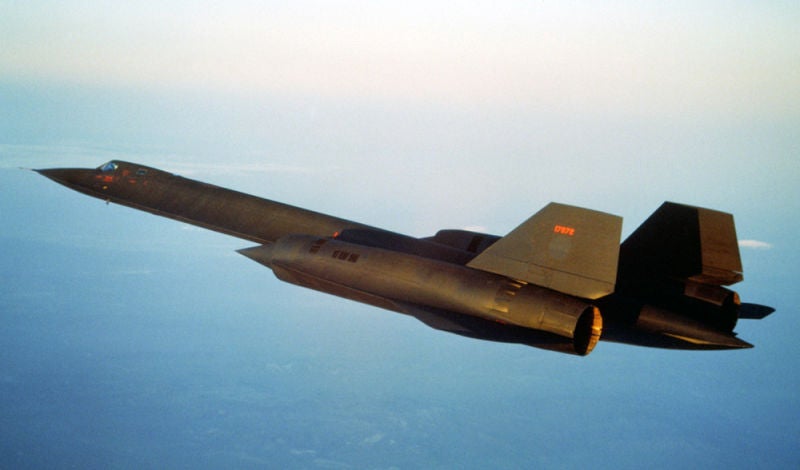
December 22, 1964 – The first flight of the Lockheed SR-71 Blackbird. During the Cold War, the United States desperately needed intelligence on its enemy’s military movements and defense programs. America had launched its first spy satellite, codenamed Corona , in 1959, but satellites, no matter how good their photographic equipment, still could not replace surveillance aircraft for flexibility in targeting and rapid response to rapidly developing global hotspots. But rapid advances in surface-to-air missiles left even the high-flying Lockheed U-2 vulnerable to attack, and, in 1957, Lockheed began development of an aircraft that could take over the job of spying on the Soviet Union and its satellite countries, a task which became more urgent in 1960 when Central Intelligence Agency pilot Francis Gary Powers was shot down by a surface-to-air missile over the Soviet Union while flying a U-2.
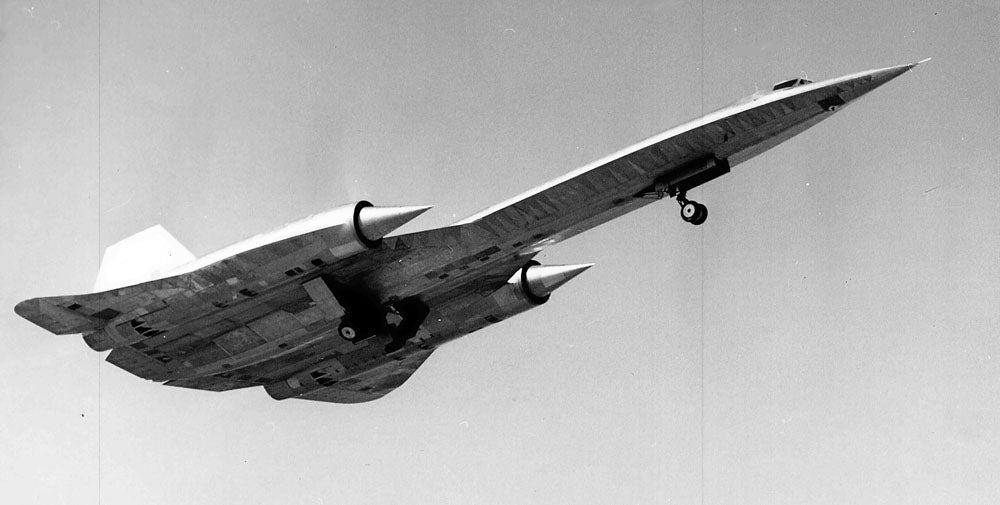
The US needed a new aircraft that could not only fly higher and faster than even the fastest Soviet aircraft, but one that was also more difficult to spot on radar. Lockheed experimented with technologies to reduce the aircraft’s radar signature, and developed aircraft shapes and coatings that served as the precursor to what we know today as stealth technology . The result of that development program was the single-seat Lockheed A-12 , which first flew in 1962. The A-12 was followed by the SR-71, which offered increased range and more sensors, along with a second crew member to handle the reconnaissance work. While the lighter and faster A-12 could outperform the SR-71, the Blackbird was a more capable aircraft.

Powered by two Pratt & Whitney J58 continuous bleed afterburning turbojets, the Blackbird could reach Mach 3.3 at 80,000 feet, where it was faster than any contemporary fighter aircraft and could not be shot down by the surface-to-air missiles of the day. To defend against radar interception, the Blackbird was coated was coated with special radar absorbing paint, and its vertical stabilizers were canted inwards to deflect radar signals. Despite its massive size, the SR-71 had a radar cross-section (RCS) of only 10 square meters. With the combination of its speed, ceiling, and stealth, no SR-71 was ever lost to enemy fire. The majority of surveillance missions were flown over North Vietnam from bases in Japan, as well as missions from Europe around the northern periphery of the Soviet Union.
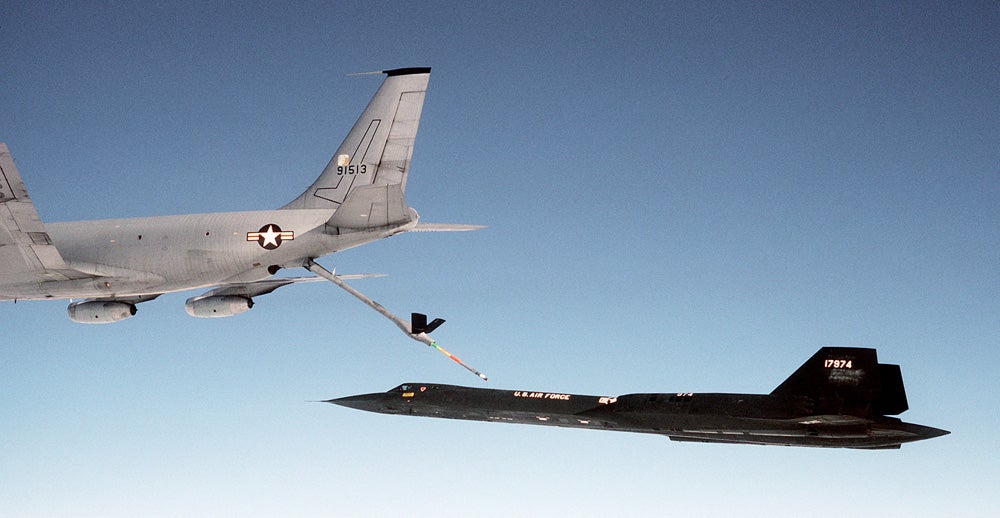
But, along with the unsurpassed capabilities of the SR-71 came very high operating costs, and the aircraft became a political issue in an era of shrinking budgets and competition for government funds. In 1989, the Blackbird was retired from service, even at a time of escalating tensions in the Middle East when it could have performed valuable reconnaissance duties in the upcoming Gulf War . When the US government realized that it still had a need for the high-flying spy plane, the SR-71 was updated with real-time data transmission capabilities and reactivated in 1993, in spite of stiff opposition from the US Air Force who said they didn’t have the funds to operate it. They also claimed that it competed with unmanned reconnaissance projects currently underway. After another political battle over funding the aircraft, the SR-71 was permanently canceled in 1998, and the last two airworthy Blackbirds were shifted to NASA for research. The book on the Blackbird was finally closed on October 9, 1999 when the last flying aircraft, an SR-71A (61-7980/NASA 844), landed at Edwards AFB in California and was placed in storage with the other NASA Blackbird. All remaining aircraft (as far we know) are now housed at aviation museums around the country. (Lockheed photo; photo author unknown; US Air Force photo)
!!! UNKNOWN CONTENT TYPE !!!
!!! UNKNOWN CONTENT TYPE !!!
!!! UNKNOWN CONTENT TYPE !!!
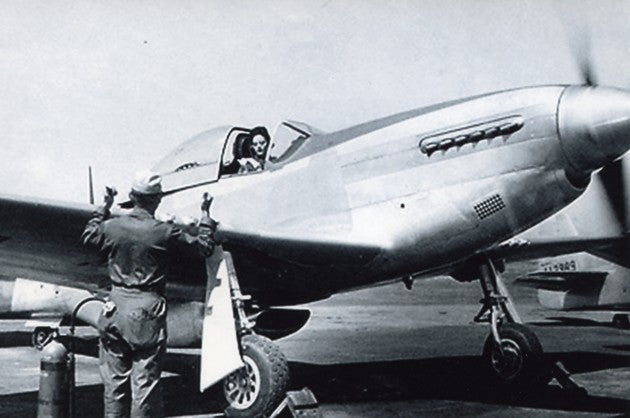
December 20, 1944 – The Women Airforce Service Pilots (WASP) is disbanded. The WASPs were an organization of women pilots who trained to ferry aircraft during WWII. Started by famed aviatrix Jackie Cochran , the WASPs had over a thousand members in its heyday, each woman pilot freeing up a male pilot for combat duty. After training at Avenger Field in Sweetwater, Texas, the WASPs were stationed around the country and, by the end of the war, WASPs had flown 60 million miles ferrying aircraft from factories to ports of embarkation. They also towed targets for live fire gunnery practice and flew cargo missions inside the US. Thirty-eight WASPs died, all in accidents, though none were afforded military honors at their burial, and it wasn’t until 2016 that legislation was passed by Congress that finally authorized their burial at Arlington National Cemetery. ( US Air Force photo )
!!! UNKNOWN CONTENT TYPE !!!
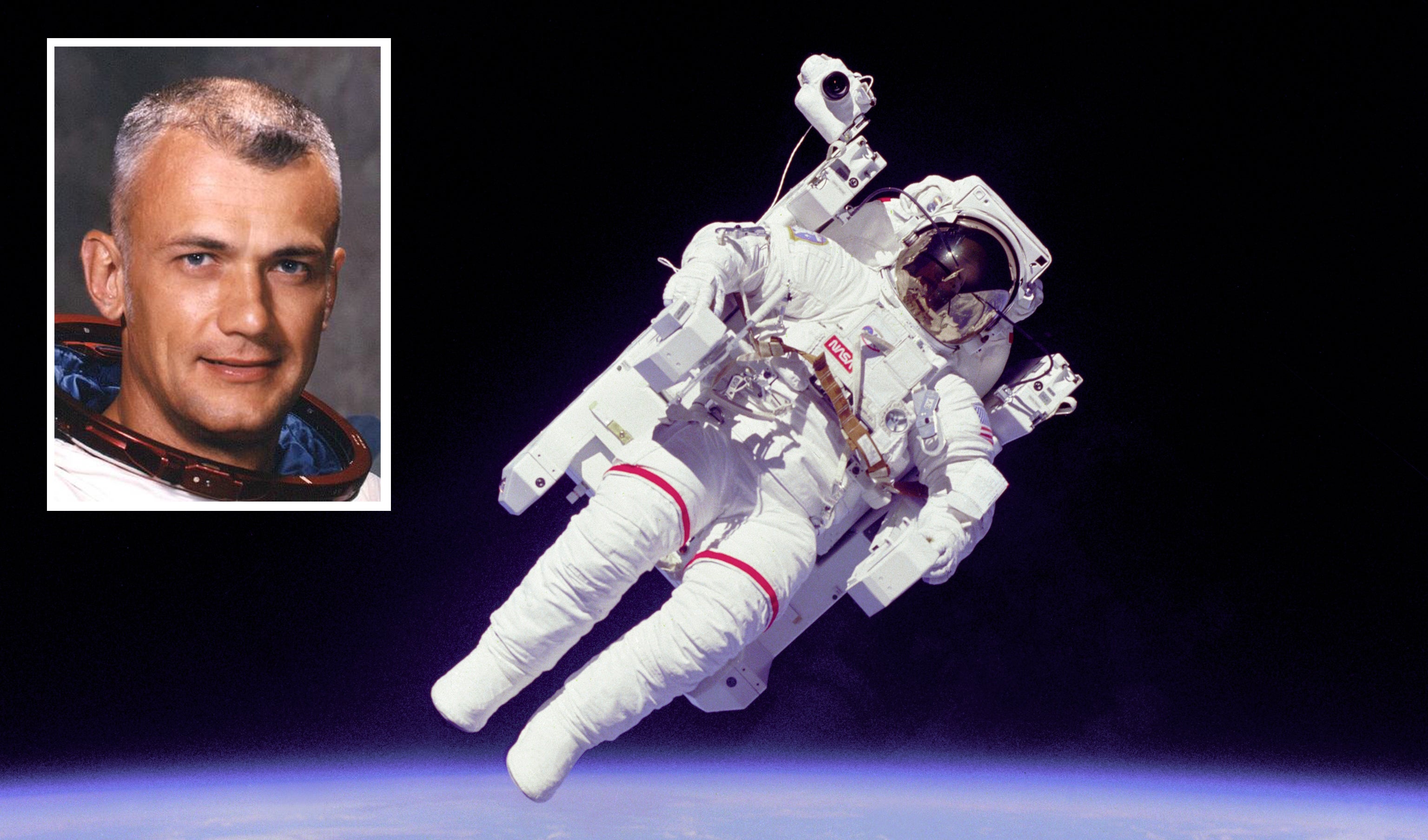
December 21, 2017 – The death of Bruce McCandless II, an American astronaut and the first man to walk untethered in space. The son of Bruce McCandless , who received the Congressional Medal of Honor for his service in the Pacific in WWII, McCandless II graduated from the US Naval Academy in 1958 before serving as an active duty fighter pilot and instructor. He was the youngest member of NASA Astronaut Group 5 , and served as the CAPCOM for the Apollo 11 mission to the Moon, was a backup pilot for the first Skylab mission and CAPCOM for Skylab 3 an Skylab 4. McCandless went to space as a mission specialist on board the Space Shuttle Challenger on STS-41-B on February 3, 1984, where he made the first flight of the Manned Maneuvering Unit, which he had helped develop during his time with Skylab. McCandless went to space a second and final time on board the shuttle Discovery in 1990. (NASA photos)
!!! UNKNOWN CONTENT TYPE !!!
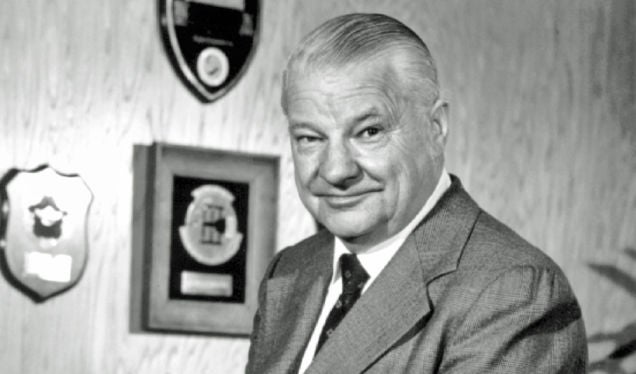
December 21, 1990 – The death of Clarence “Kelly” Johnson, the former head of Lockheed’s Advanced Development Projects, better known as the Skunk Works , and one of the most influential and successful aircraft design engineers in American history. His work for Lockheed produced some of the world’s iconic aircraft, including the P-38 Lightning , the P-80 Shooting Star , America’s first operational jet fighter, and the F-104 Starfighter , America’s first supersonic jet fighter. As head of the Skunk Works, Johnson oversaw the development of the U-2 reconnaissance aircraft, the A-12 , and the remarkable SR-71 Blackbird , the first production aircraft to exceed Mach 3. Among his other achievements, Johnson was twice awarded the prestigious Collier Trophy . (US Government photo)
!!! UNKNOWN CONTENT TYPE !!!
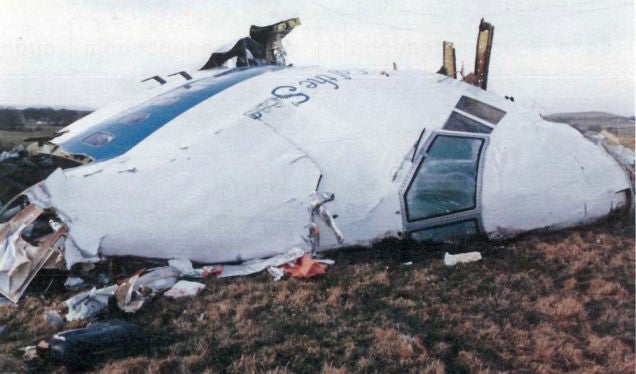
December 21, 1988 – Pan Am Flight 103 is destroyed by a bomb over Lockerbie, Scotland. Pan Am Flight 103 was a regularly scheduled flight from Frankfurt to Detroit via London and New York. After departing from London Heathrow, the Boeing 747 (N739PA) was destroyed by a bomb that had been placed in the forward cargo hold. The crash killed all 270 passengers and crew, as well as 11 people on the ground. Investigators alleged that two Libyans, working on the orders of Libyan leader Muammar Gaddafi , had planted the bomb that destroyed the aircraft. Following United Nations sanctions against Libya, Gaddafi turned the two men over for trial in the Netherlands, and one, Abdelbaset al-Megrahi , was found guilty of 270 counts of murder and imprisoned for life. In 2003, Gadaffi accepted responsibility for the attack and paid compensation to the families of the victims, and al-Megrahi was freed from prison in 2009 on compassionate grounds after a diagnosis of prostate cancer and died in 2012. (UK Government photo)
!!! UNKNOWN CONTENT TYPE !!!

December 21, 1988 – The first flight of the Antonov An-225 Mriya , the longest and heaviest airplane ever constructed. Possessing the largest wingspan of any operational aircraft in service, Mriya’s wingspan is only exceeded by the Hughes H-4 Hercules (“Spruce Goose”). The Mriya has a maximum takeoff weight of 640 tons, and holds the absolute world records for a single item payload of 418,834 pounds and an airlifted total payload of 253,820 pounds. Originally developed as a carrier for the Soviet Buran space shuttle program, only one was built. A second aircraft was under construction but abandoned due to lack of funding and no commercial interest. However, the Russian government has expressed interest in completing the second Mriya and developing it into a midair launch platform. (Photo by Ralf Manteufel via Wikimedia Commons )
!!! UNKNOWN CONTENT TYPE !!!

December 21, 1968 – The launch of Apollo 8.
Overshadowed by
Apollo 11
, the mission that landed the first man on the Moon on July 20, 1969, Apollo 8 had its own set of important milestones along the route to the first lunar landing. Astronauts
Frank Borman
,
James Lovell
(commander of the ill-fated Apollo 13 mission) and
William Anders
were the first humans to leave Earth orbit, the first to see the planet Earth in its entirety, the first to make a direct observation of the far side of the Moon, and the first to witness
Earthrise
. After a 3-day flight, the astronauts made 10 orbits of the Moon and made a Christmas Eve broadcast to the Earth during which they read from the Book of Genesis. Apollo 8 returned to Earth on December 27.
(NASA photo)
!!! UNKNOWN CONTENT TYPE !!!
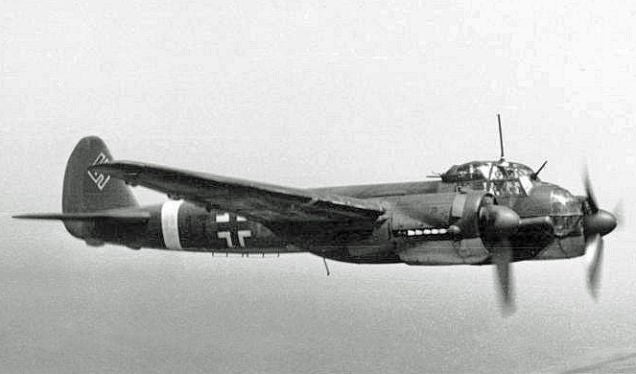
December 21, 1936 – The first flight of the Junkers Ju 88, a twin-engined multi-role bomber introduced to the Luftwaffe at the outbreak of WWII. The Ju 88 was designed as a Schnellbomber (high speed bomber) that was intended to be able to outrun enemy fighters and not require fighter protection of its own. Though this concept wasn’t entirely successful in practice, the Ju 88 nevertheless served throughout the war and was one of the Luftwaffe’s most successful types. It served not only as a bomber, but also as a dive bomber, night fighter with the addition of the Lichtenstein radar , torpedo bomber, and reconnaissance aircraft. Late in the war, in a program called Mistel , unmanned Ju 88s were loaded with bombs and mated to a manned fighter that flew both aircraft to the target, whereupon the Ju 88 was released. More than 15,000 Ju 88s were produced during the war. (Bundesarchiv photo via Wikimedia Commons )
!!! UNKNOWN CONTENT TYPE !!!
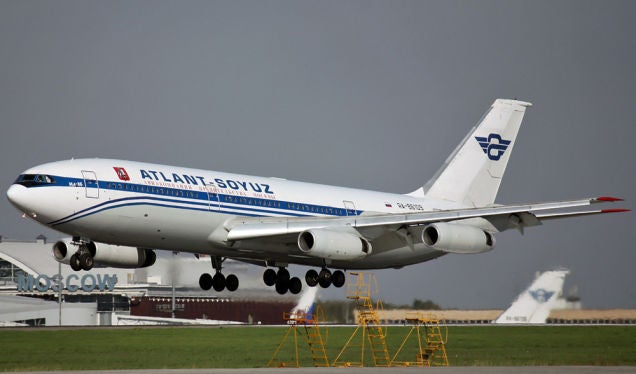
December 22, 1976 – The first flight of the Ilyushin Il-86,
the first wide-body airliner to be produced by the Soviet Union. The introduction of the Il-86 was intended to coincide with the Summer Olympics held in Moscow in 1980, but a protracted 10-year development program failed to reach that goal. Though much of the technology in the Il-86, including the
Kuznetsov NK-86
turbofans, was more reminiscent of the 1960s, the Il-86 went on to serve for more than 30 years as a safe and reliable airliner, suffering no fatal accidents during its service life. A total of 106 were produced, and all have since been retired except for a small number that still serve the Russian Air Force. It was subsequently developed into the much more modern
Ilyushin Il-96
.
(Photo by Dmitry Terekhov via
Wikimedia Commons
)
!!! UNKNOWN CONTENT TYPE !!!
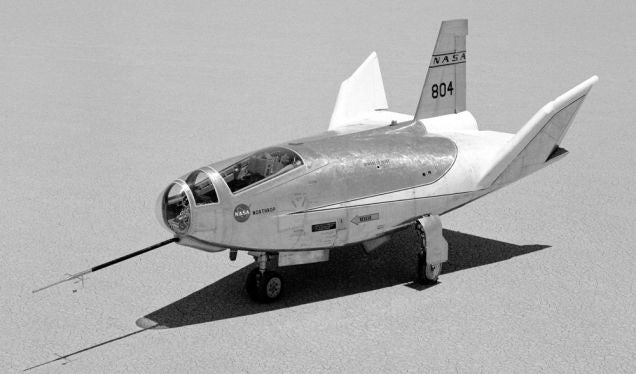
December 22, 1966 – The first flight of the Northrop HL-10. Along with the Northrop M2-F2 , Northrop designed the HL-10 as part of the experimental heavy lifting bodies program run by NASA during the 1960s which investigated the viability of aircraft in which the fuselage, rather than wings, provided the lift necessary for flight. The HL-10 was carried aloft by a Boeing B-52 Stratofortress , and, after separation, a rocket engine powered the lifting body during flight tests. Over the course of 37 test flights, the HL-10 reached a top speed of Mach 1.86 and a maximum altitude of 90,030 feet. HL-10 project engineer Dale Reed formulated a plan to fly the HL-10 into space using launch hardware left over from the canceled Apollo program, but that plan never came to fruition. Only one HL-10 was produced, and it is on display at the Armstrong Flight Research Center at Edwards Air Force Base in California. (NASA photo)
!!! UNKNOWN CONTENT TYPE !!!

December 22, 1949 – The first flight of the North American F-86D Sabre.
The F-86D, commonly called the “Sabre Dog” or “Dog Sabre,” was a transonic, all-weather interceptor that served the US Air Force from 1951 until its retirement in 1961. Derived from the earlier
North American F-86 Sabre
, the F-86D was actually much larger, had a more powerful engine, and was fitted with a Hughes AN/APG-36 radar in a nose cone above the air intake. Despite its resemblance to the earlier Sabre, the D model shared only 25% commonality with its smaller sibling. The F-86D was the first US Air Force fighter to have an all-missile and rocket armament, and the first all-weather interceptor to have a single pilot. A total of 2,847 F-86Ds were built.
(US Air Force photo)
!!! UNKNOWN CONTENT TYPE !!!
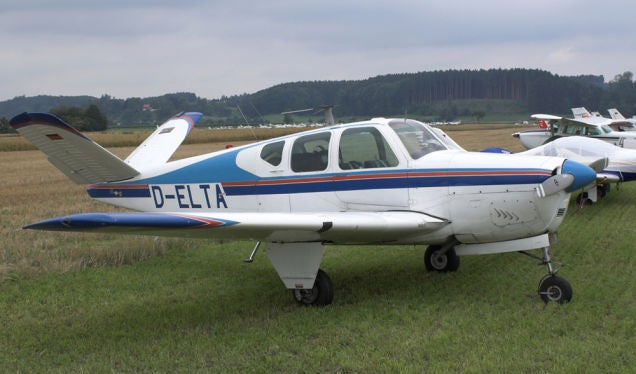
December 22, 1945 – The first flight of the Beechcraft Bonanza. Introduced in 1947, the Bonanza remains in production today, and this continuous run is the longest of any aircraft in history. Beechcraft has built more than 17,000 Bonanzas of all variants. One of two all-metal general aviation aircraft to emerge after WWII (the other being the Cessna 195 ), the Bonanza was a relatively advanced aircraft for its day, and featured a system that connected the yoke and rudder controls allowing novice pilots to execute coordinated turns using just the yoke. The Bonanza also pioneered the use of a V-tail in civilian aviation, though crashes by less skilled pilots led Beechcraft to offer a traditional tail configuration beginning in 1959. (Photo by Juergen Lehle via Wikimedia Commons )
!!! UNKNOWN CONTENT TYPE !!!
!!! UNKNOWN CONTENT TYPE !!!
!!! UNKNOWN CONTENT TYPE !!!
!!! UNKNOWN CONTENT TYPE !!!
!!! UNKNOWN CONTENT TYPE !!!
!!! UNKNOWN CONTENT TYPE !!!
!!! UNKNOWN CONTENT TYPE !!!
If you enjoy these Aviation History posts, please let me know in the comments. And if you missed any of the past articles, you can find them all at
Planelopnik History
. You can also find more stories about aviation, aviators and airplane oddities at
Wingspan
.
!!! UNKNOWN CONTENT TYPE !!!
 "Mercedes Streeter" (smart)
"Mercedes Streeter" (smart)
12/22/2017 at 12:38, STARS: 2
Fantastic post as always, ttyymmnn!
Related-unrelated: I finally got my DC-10-50TI (computer) running properly last night. Without any tweaks to the processor or GPU, it can play FSX on Ultra at 60 fps. :3
Maybe my New Year’s Resolution will be to get a pilot’s license?
 "WilliamsSW" (williamssw)
"WilliamsSW" (williamssw)
12/22/2017 at 12:59, STARS: 0
Do it!!!
 "OPPOsaurus WRX" (opposaurus)
"OPPOsaurus WRX" (opposaurus)
12/22/2017 at 13:22, STARS: 0
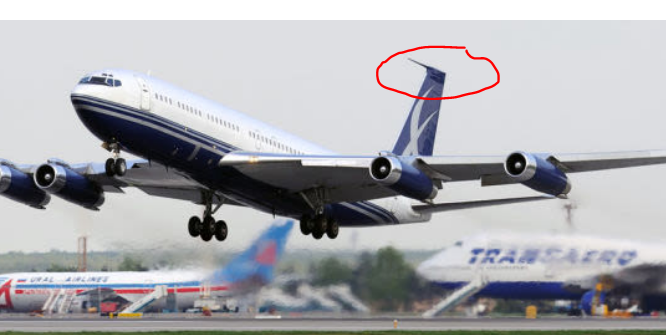
whats up with the spike thingy
 "TahoeSTi" (tahoesti)
"TahoeSTi" (tahoesti)
12/22/2017 at 13:26, STARS: 0
Great post as always, I love reading these.

12/22/2017 at 14:30, STARS: 2
HF radio antenna.

12/22/2017 at 14:55, STARS: 0
F-86 Dog Sabre, that was the one with the retractable tray under the fuselage for Mighty Mouse FFARs.
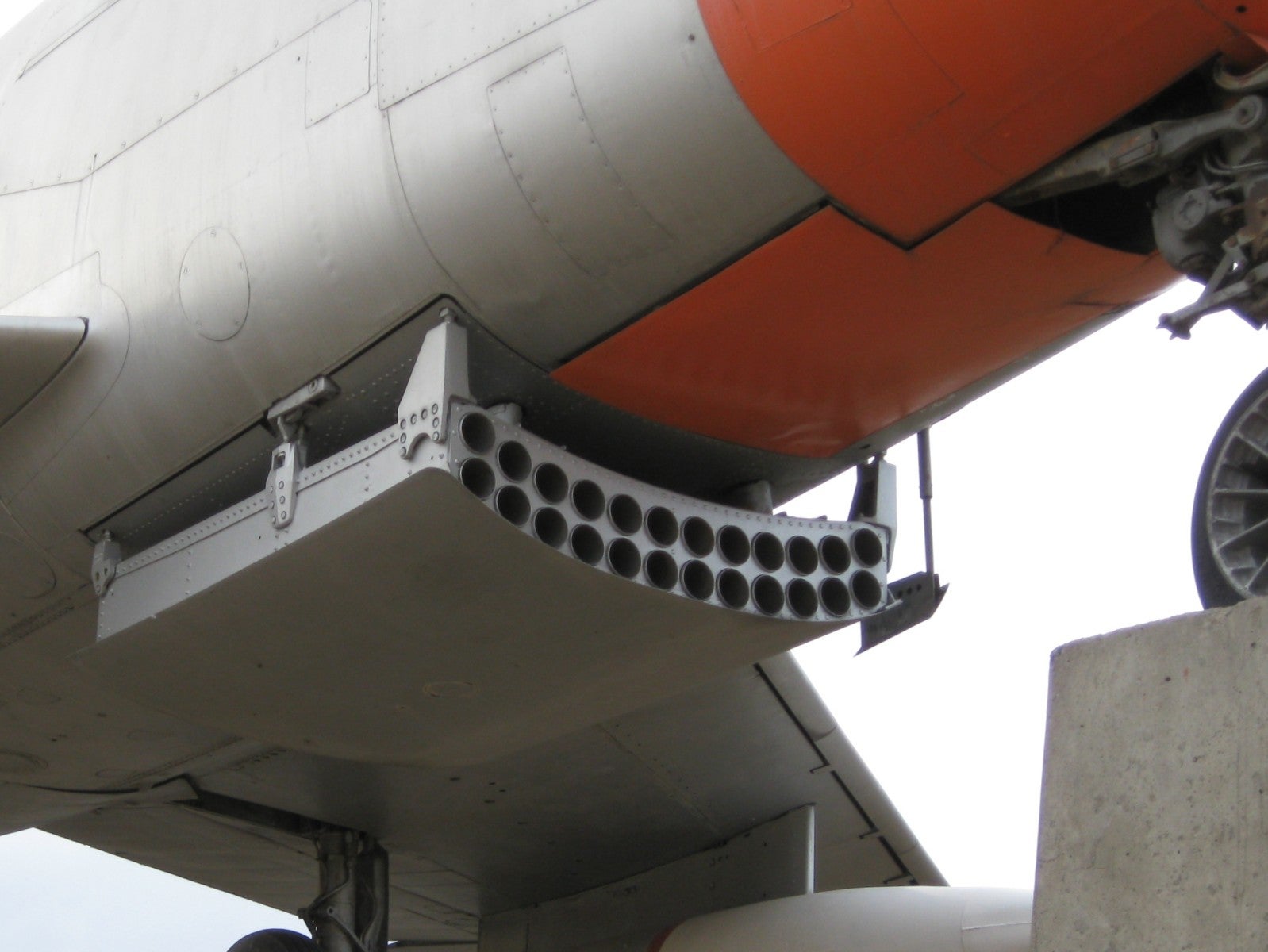
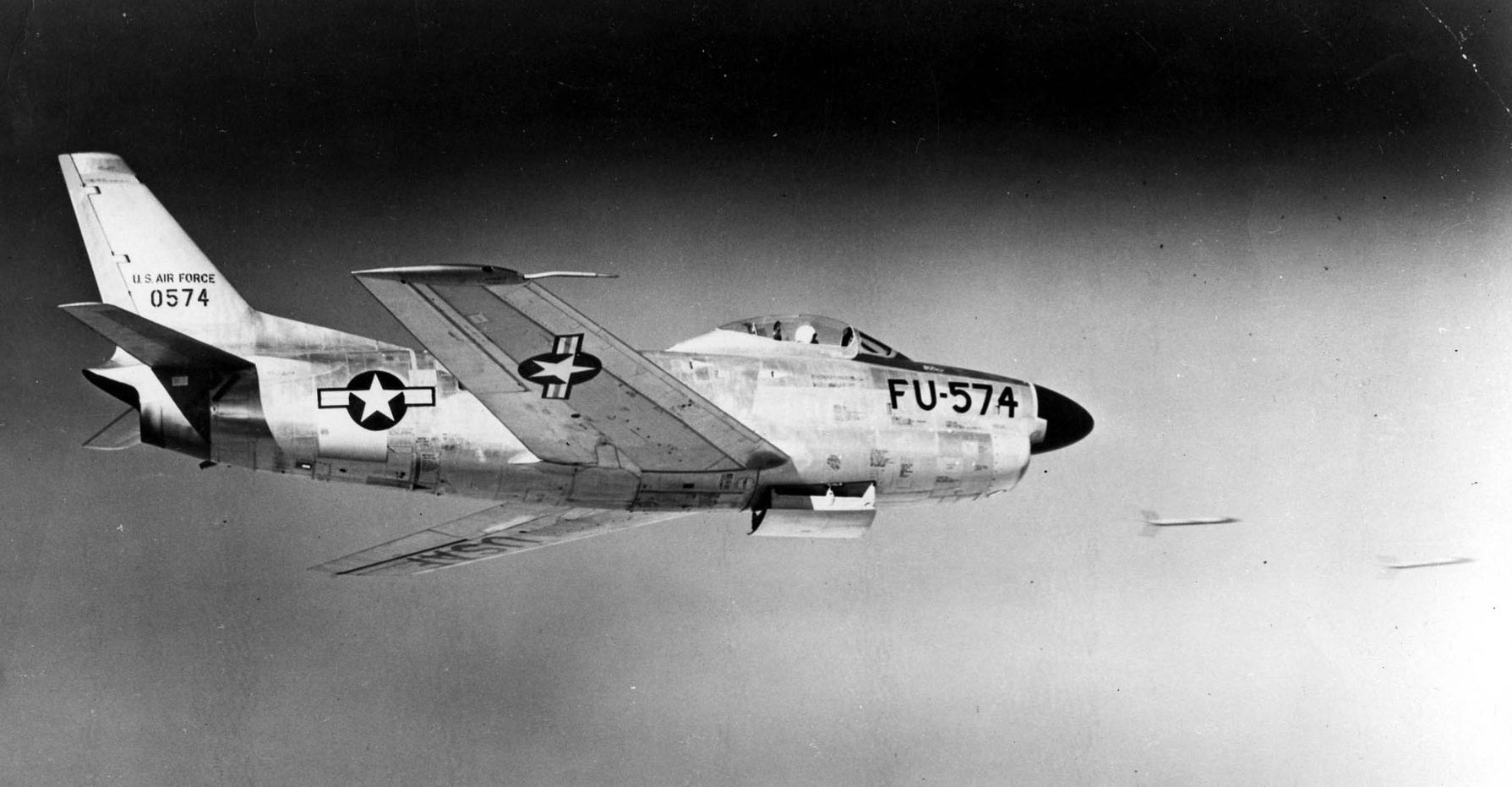
Though the Fiat-built (must not make joke...) F-86K substituted four 20mm cannon.
Kinda odd that the Yugoslav Air Force flew them for a while.
 "jimz" (jimz)
"jimz" (jimz)
12/22/2017 at 17:12, STARS: 1
something to chew on: By its third year of service, the 707 had already experienced 11 hull-loss incidents, most of them fatal (including a couple of hijackings/bombings which don’t really count.)
in contrast, the 777 didn’t have a hull-loss incident until its 13th year of service (BA38,) and there were no fatalities.
we’ve come a long way.
 "ttyymmnn" (ttyymmnn)
"ttyymmnn" (ttyymmnn)
12/22/2017 at 17:23, STARS: 0
What Skyfire77 said!